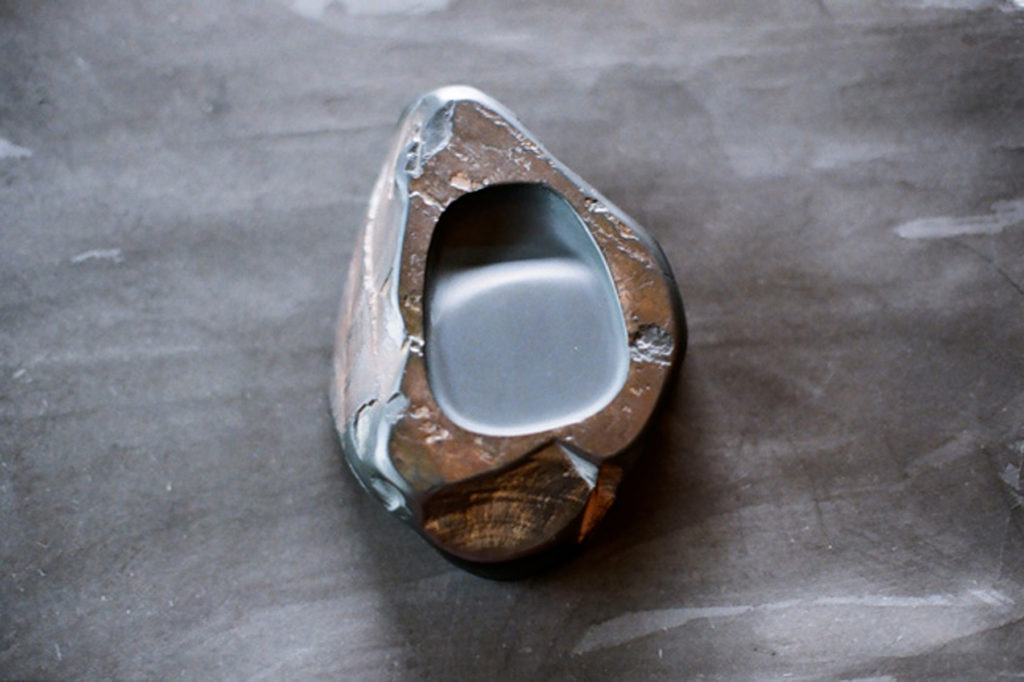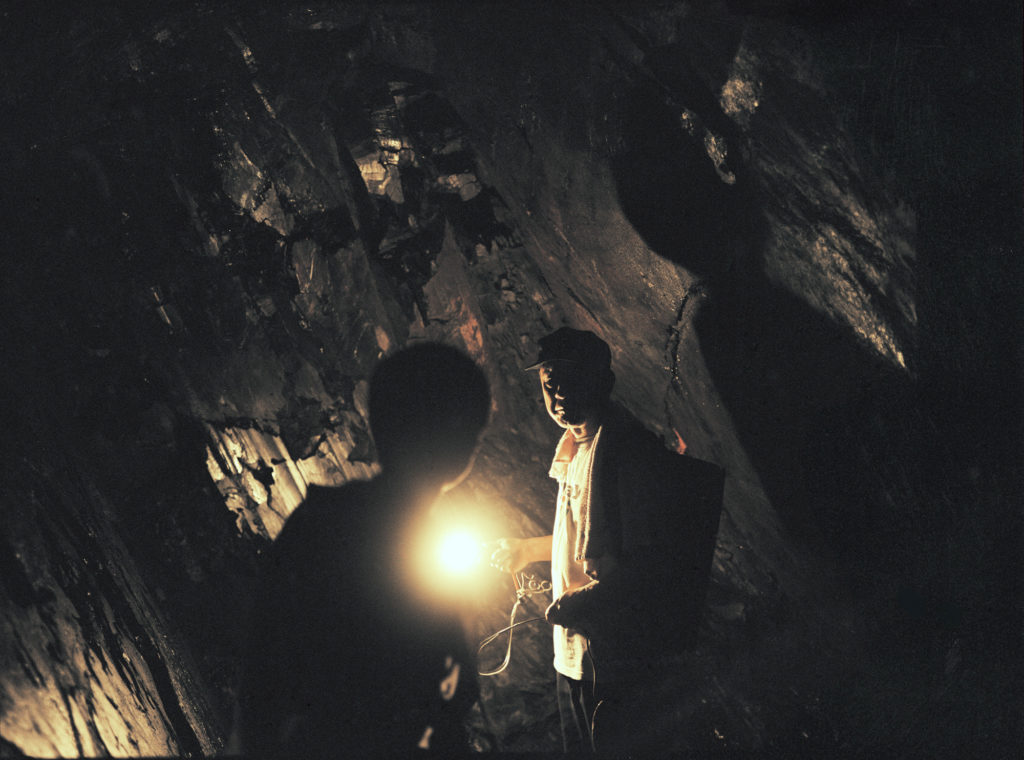Story 01 | The Inkstone Cave
The stone is cold and wet to touch; a close grained and smooth slate. In the dark we feel for an end to the rock before a single light bulb turns on. Deep inside a forested Yamanashi mountain, this cave is the last place to mine for Amehata stone ― one of Japan’s important ancient materials. When these stone walls collapse, or when Gyokusen Mochizuki mines the last piece of slate from the mountain’s geological guts, a living piece of Japanese cultural history will have become extinct. Mochizuki is the last Suzuri shoukunin (“inkstone craftsman”) in Amehata village making inkstones out of the last fragments of valuable Amehata slate.
He carves this slate, making it suitable for grinding dried ink sticks on. Adding a few drops of water (or morning dew, as they did in the old days) while rubbing an ink stick in circles on the flat stone creates a thick liquid ink. Japanese Suzuri have been used this way since the 8th century; they are an ancient and essential tool. Chinese Suzuri date back even further. Across Asia, calligraphy owes an enormous debt to Suzuri; without these carved stones, writing would not exist. “There are five other mines in Japan which contain stone suitable for making Suzuri, but none are as highly regarded, or have a history as rich as Amehata’s.” This mountainous part of Japan was the place where an extremely hard, and lustrous type of slate was found by a Zen Monk. The Suzuri made from this slate would eventually be mimicked all over Japan and today, the stone is highly sought after by craftsmen and collectors.

At its peak, nearly 100 years ago, Amehata village had around 20 Suzuri makers working beside its turquoise river. Today Amehata village has only Mochizuki, a few abandoned houses and a Suzuri museum beside that turquoise river, where Mochizuki spends his days carving slate. He transports it from the cave via a homemade satchel constructed from a section of thick conveyor belt (“it’s a thick material and the rocks don’t hurt my back”) and in the workshop he polishes the bottom of each stone, checking for hairline cracks caused by excavating. Then once he has a suitable stone, he begins carving. “I’m trying to achieve softer forms than my father. I’ve been doing this for a long time now but I still don’t feel I have ever made a perfect stone. The hardest part is making the Ike.” Japanese for “pond,” the Ike is the pool where the liquid ink runs into and Mochizuki has spent nearly his whole life perfecting the balanced slopes, the slight inclines and the curves necessary for a high quality Suzuri; essential for producing viscous, rich ink.
With Amehata village now almost empty, Mochizuki seems to spend more time with stones than people. “If I’m in the cave all day I get a strange feeling, like someone is squeezing me tight. Once I’m out I am ok, but inside there is a lot of energy. A shaman once told me these stones have a very strong power, but I don’t know about that. There is no meaning to this stone unless you are actually using it. There is no other way to really understand it.”
< PAPERSKY no.36(2011)>












